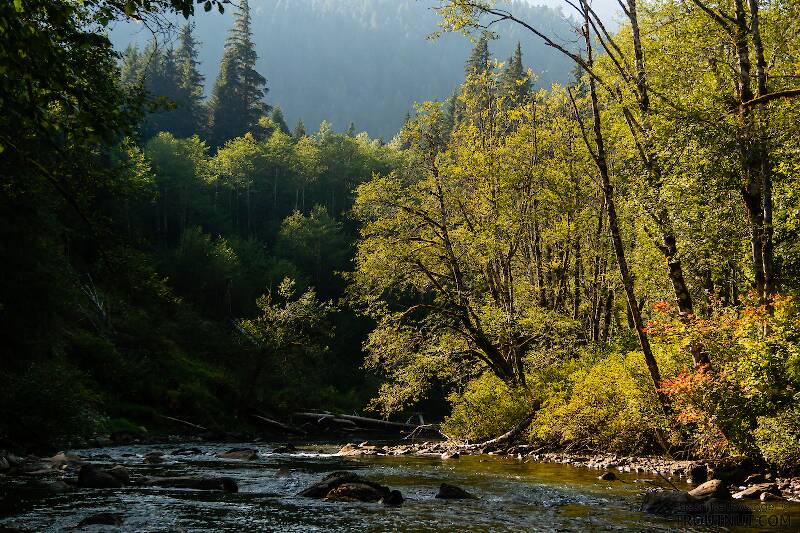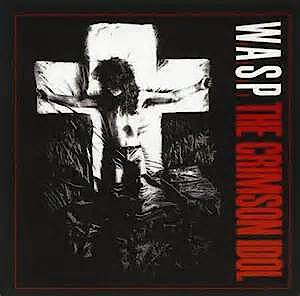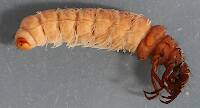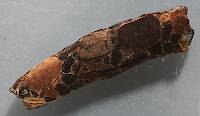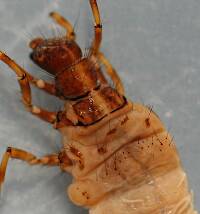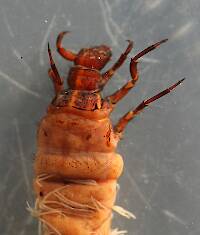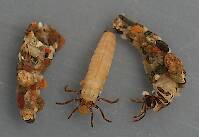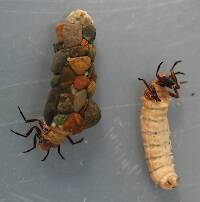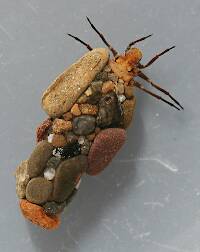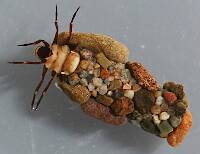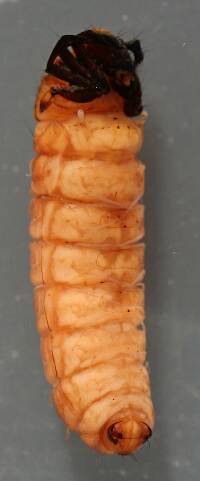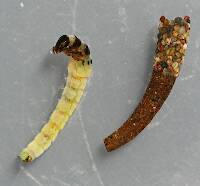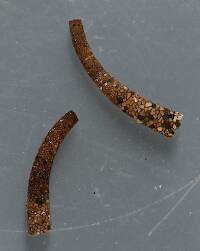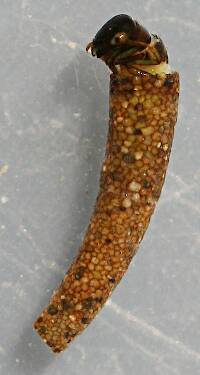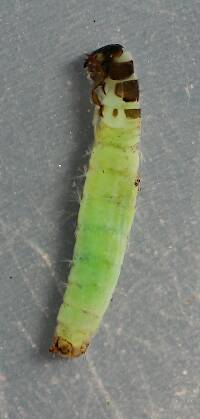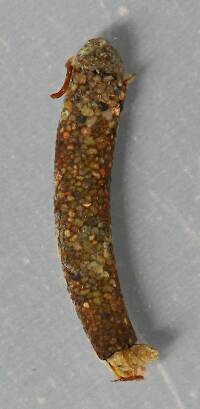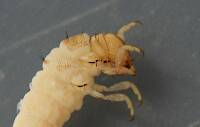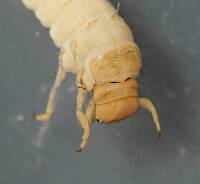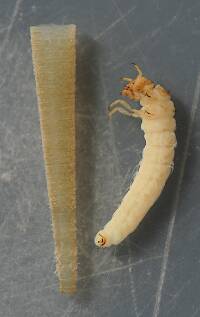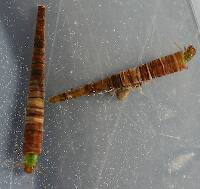
Salmonflies
Pteronarcys californica
The giant Salmonflies of the Western mountains are legendary for their proclivity to elicit consistent dry-fly action and ferocious strikes.
Featured on the forum

This is the first of it's family I've seen, collected from a tiny, fishless stream in the Cascades. The three species of this genus all live in the Northwest and are predators that primarily eat stonefly nymphs Merritt R.W., Cummins, K.W., and Berg, M.B. (2019).

Troutnut is a project started in 2003 by salmonid ecologist Jason "Troutnut" Neuswanger to help anglers and
fly tyers unabashedly embrace the entomological side of the sport. Learn more about Troutnut or
support the project for an enhanced experience here.
Adirman on Sep 20, 2010September 20th, 2010, 12:03 am EDT
Yesterday I went to the Willowemoc to fish the no-kill section by the fly-fishing museum and noticed several of those cased caddis things underneath the rocks. To me, they look like pieces of little branches, brownish in color and approx 1/2"to 1" in length. What patterns do you suggest to fish when you see this?
Thanks,
Adirman
RleeP on Sep 20, 2010September 20th, 2010, 10:38 am EDT
This is just a viewpoint as I know there are quite a few folks who imitate the actual cased caddis larvae and do well. And back in the days when I was killing a lot of fish, I'd say that next to crayfish, the most common stomach content I found in the wild brook and brown trout I cleaned was cased caddis larvae, rocks, sticks and all.
It's just that if I'm going to fish a larval pattern, my preference has always been to imitate the larvae out of the case. Between the free ranging caddis species (non case-builders) and case building species that for some reason or another find themselves outside of their cases, the fish see a lot of these. For this sort of fishing, a simple weighted fly tied on a curved shank or scud hook in sizes 12-18 seemed to work best. They're easy flies to tie. The entire body should be a some natural or synthetic dubbing in a shade imitative of the larvae you want to simulate, usually cream or olive or bright green or a dull tan. Then dub in a little black fur or a turn or two of black ostrich herl at the head, finish the head with a whip or half hitches and you're done. Fish these flies dead drift and deep so they sort of tumble along the bottom the way the natural would.
Beats trying to imitate a bunch of sticks or grains of gravel glued together, IMO. And catches just as many if not more fish.
It's just that if I'm going to fish a larval pattern, my preference has always been to imitate the larvae out of the case. Between the free ranging caddis species (non case-builders) and case building species that for some reason or another find themselves outside of their cases, the fish see a lot of these. For this sort of fishing, a simple weighted fly tied on a curved shank or scud hook in sizes 12-18 seemed to work best. They're easy flies to tie. The entire body should be a some natural or synthetic dubbing in a shade imitative of the larvae you want to simulate, usually cream or olive or bright green or a dull tan. Then dub in a little black fur or a turn or two of black ostrich herl at the head, finish the head with a whip or half hitches and you're done. Fish these flies dead drift and deep so they sort of tumble along the bottom the way the natural would.
Beats trying to imitate a bunch of sticks or grains of gravel glued together, IMO. And catches just as many if not more fish.
Aaron7_8 on Sep 20, 2010September 20th, 2010, 1:30 pm EDT
I totally agree think of it like a fish, sticks and sotne don't have any caloric content and have to be expelled as waste. It is (in my experience) to fish a non-cased form I have fished them both and the uncased does better, however, the streams I fish have both types of caddis on just about every rock. As well as assorted may flies and stone flies.
Adirman on Sep 21, 2010September 21st, 2010, 10:37 am EDT
thanks guys, 1 more ?:what size nymph pattern? Like a 12-14 or so or does it depend upon the size of the case?
RleeP on Sep 21, 2010September 21st, 2010, 11:33 am EDT
I'd think #14 would be the work horse size, not so much because most of the larvae are precisely that size, but rather because this is speculative fishing and #14 seems a good compromise between being large enough to turn the trout's head and small enough to seem realistic. But certainly, #12's and #16's and less often, 18's also have their place as well. It can depend on the species in the stream and how common they are. If for example, you're seeing a lot of the stick cased larvae in the calm shallows, these are usually a little bigger, often a #12 and are most often a dark cream to tan. By and large though, if you carry some larvae in mostly 14's, some with a green body and others with a cream to tan body, you'll catch fish on them. Just be sure to get them down where the fish are used to seeing them.
Aaron7_8 on Sep 23, 2010September 23rd, 2010, 1:26 pm EDT
It also depends on the stream type, bugs in cold freestones from everything I have read and observed tend to be bigger. The bugs in limestoners and tailwaters seem to be a little smaller. On the streams I fish 14 is a go to size to start with for everything but the stoneflies. Although I just spotted some October caddis that is tied on a size 8 scud hook, so much easier to tie than a 18 pheasant tail.
Quick Reply
Related Discussions
Topic
Replies
Last Reply
3
Jul 3, 2007
by JeffK
by JeffK
4
Oct 29, 2014
by Millcreek
by Millcreek
4
Sep 14, 2007
by Mcjames
by Mcjames

